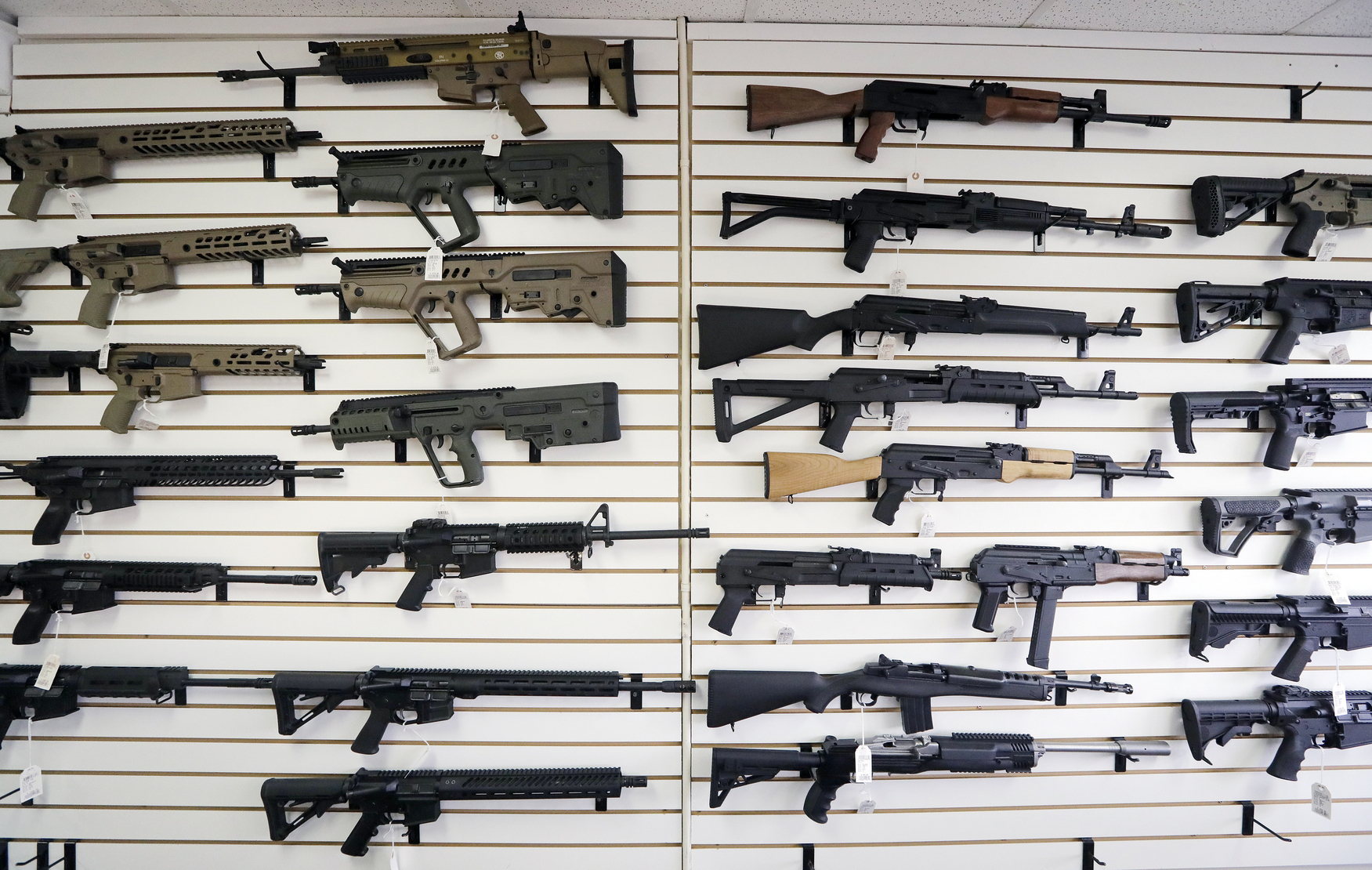How many Americans own guns? The question is essential to our understanding of gun violence — but reliable data on the subject is scarce. Apart from three surveys conducted by the Centers for Disease Control and Prevention nearly two decades ago, no authoritative state-level measurement of household gun ownership exists.
A report from the nonprofit think tank RAND Corporation, published today, provides researchers and the public with fresh figures on gun ownership. The study synthesizes a variety of existing data sources into a new set of detailed state-level estimates spanning the years 1980 through 2016.
Household Gun Ownership By State, 2012-2016
Source: RAND Corporation
“The RAND report takes a comprehensive and statistically sophisticated approach,” Philip Cook, a gun violence researcher at Duke University, said in an email. “Any scholar interested in this field will necessarily have to consider the findings of this report.”
The new estimates fill in the details of a trend whose contours were already known: The prevalence of firearm ownership has declined in virtually every state over the past several decades. Most states exhibit strikingly similar trends, with ownership rates beginning to fall steadily in the early 1990s before plateauing in the mid-2000s, followed in some places by a modest rebound.
Montana leads the country in firearm ownership, with an estimated 64 percent of adults living in gun-owning households between 2012 and 2016. Wyoming follows with 60 percent and Alaska with 59. On the opposite end of the spectrum, New Jersey had the lowest average with 8 percent, nearly tied with Hawaii. Massachusetts holds the second lowest average with 9 percent.
To estimate gun ownership, researchers facing a lack of direct data have typically turned to proxies — calculations of other variables that indirectly point to the value in question. The most widely used proxy for gun ownership is the percentage of suicides involving a firearm. It may seem to be an unintuitive metric, but firearm suicides are closely correlated with the reliable state-level measurements of firearm ownership that are available from the CDC. Other proxies, some of which have been used in combination with firearm suicides, include per capita measures of hunting licenses, firearm background checks, and even subscriptions to Guns & Ammo magazine. All of these variables are higher in states with higher rates of gun ownership, and vice versa, but none directly reveal what percentage of a state’s residents own guns.
The RAND study’s key innovation is to incorporate all of these proxies, combining them with survey data gathered by the CDC’s Behavioral Risk Factor Surveillance System, the General Social Survey, Pew Research Center, and Gallup. Apart from the CDC’s data, these surveys have been of little use for research because they include too few participants to draw reliable conclusions at the state level. “Individually, each one is too small to be useful,” said Terry Schell, a senior behavioral scientist at RAND and the report’s lead author. “But collectively, they are useful.”
The RAND team adjusted the surveys by applying a statistical technique called multilevel regression and poststratification, which improved the state-level reliability of the estimates. Then they used a second technique, structural equation modeling, to combine those adjusted surveys with the other proxy measures to produce the final estimates. “We’re trying to identify the true value of gun ownership that would explain all of the available data from all of these measures,” said Schell.
The study does not estimate the absolute number of guns in each state, nor the share of individuals who own guns. Rather, it estimates the share of a state’s adults who live in a household with a firearm. This mirrors the question most commonly asked in the available survey data. For example, for several years Pew has asked participants, “Do you happen to have any guns, rifles or pistols in your home?” Surveys with more detailed and specific questions about ownership are scarcer, perhaps because those questions are likely to dissuade gun owners from participating altogether.
Estimates of gun sales based on federal background check data show that the market has been thriving, with several sales records set in recent years. How can ownership levels decline even as America’s gun stock grows? One likely explanation is that the demographic of people who own several guns is expanding, and many newly purchased guns are going to households where a gun is already present. “Those that have guns are much more likely to be what you might consider collectors,” Schell said. “People who own guns now often own three, four, five guns.”
RAND’s gun work was funded by Arnold Ventures, which also funds The Trace. Here’s where you can read our editorial independence policy and our policy on donor transparency.
How Gun Ownership Has Changed in Every State
Percentages show five-year moving average estimates of adults living in households with guns.
Source: RAND Corporation

